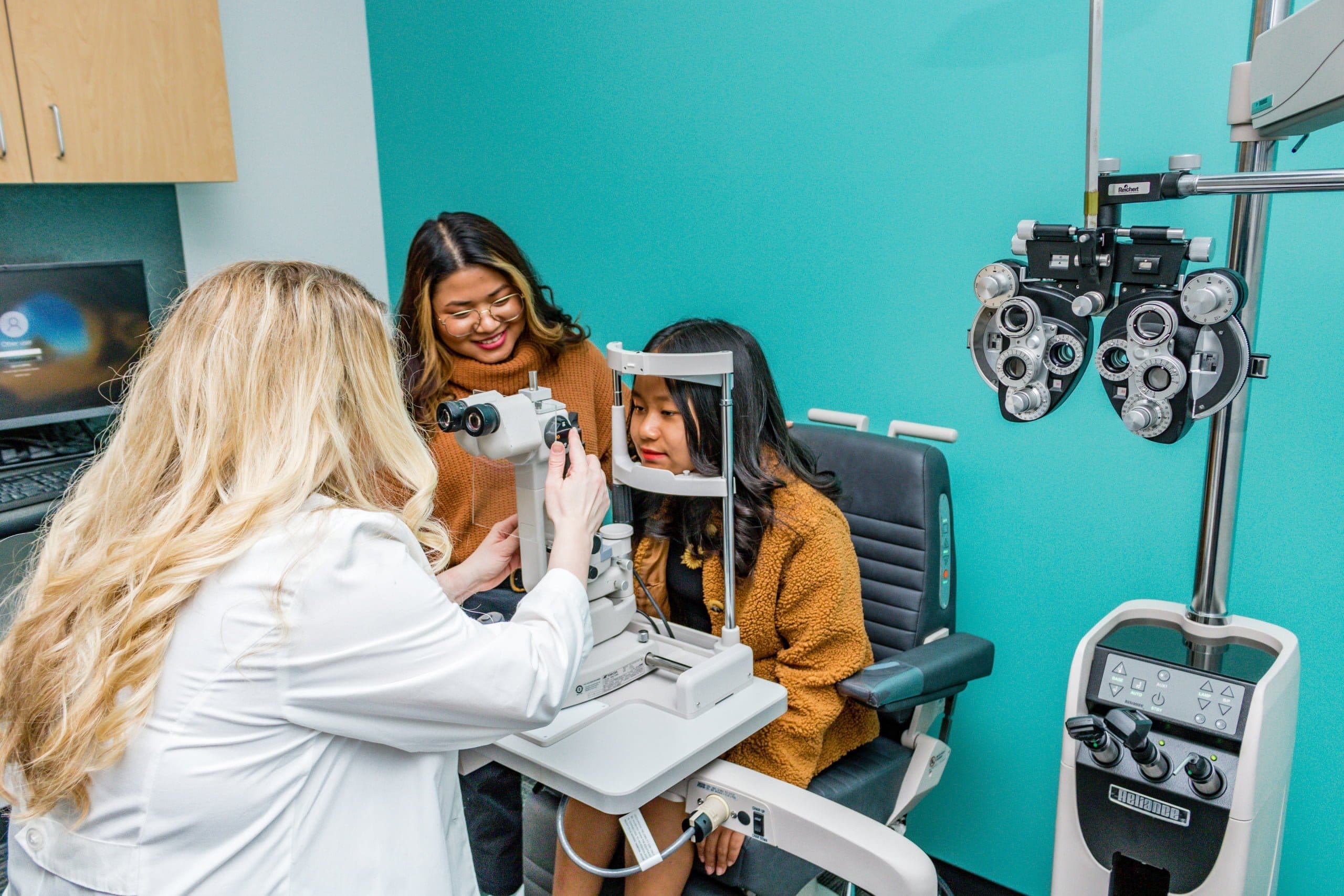Good vision and good grades go hand in hand. Start off the new school year by ensuring that your child’s most important learning tool, their vision, is functioning correctly. Back-to-school kids eye exams set your child up for success in learning, and here’s why.
Does My Child Need an Eye Exam Before School?
Consider an eye exam a back-to-school priority, just like school supplies. A considerable part of the learning process for children is visual. About 80% of learning takes place through the eyes during the first 12 years of life, and children’s vision can change without noticeable symptoms. Reading, writing, whiteboard viewing, and using computers are among the many visual tasks students perform daily in school. A child’s eyes are constantly in use and when their vision is not functioning properly, education and extracurricular activities like sports can suffer.
Let’s look deeper into how important a comprehensive eye exam is to a child’s learning and development.
Kids Eye Exams Detect Vision Problems Early
Did you know that 1 in 4 children has a vision problem that can hinder their performance in school? Often, these problems go undetected. Because a child’s vision may change frequently during the school years, your child should receive a comprehensive eye exam every year, or more frequently if recommended by your eye doctor. The most common vision problem in children is blurry vision caused by nearsightedness (myopia), farsightedness (hyperopia), and astigmatism.

Back-To-School Vision Screenings and Eye Exams are not the same
Unfortunately, many parents incorrectly assume that a vision screening is adequate enough to test a child’s vision. While vision screenings can be a helpful first step, they can’t replace a thorough exam from an optometrist. Notably, children can still pass a school vision screening and still have vision problems. According to the AOA, up to 75% of school vision screenings miss vision problems. Additionally, 61% of children found to have vision problems from these screenings don’t see an eye doctor.
Kids Eye Exams Enhance Reading Skills
A child who has 20/20 vision can still have a vision problem relating to eye focusing, eye tracking, and eye coordination. All these eye functions play a critical role in reading skills and overall sight development and if any of these visual skills are not functioning properly, your child will have to work harder to learn effectively. Many children are unaware that they have a vision problem because they assume everyone sees the way they see. This can lead to lower reading comprehension and frustration with reading overall. Keep an eye out for these symptoms:
Signs of Vision Problems in Children
- Squinting
- Headaches
- Eye turns (when one or both eyes turn in or out, up or down.)
- Tilting the head to one side
- Avoidance of reading
- Struggle with written directions
- Short attention span
- Difficulty remembering what they read.
- Eye Fatigue (frequent blinking or rubbing of eyes)
Many of these symptoms are subtle and, in some cases, untreated vision problems can be misdiagnosed as Attention Deficit Hyperactivity Disorder (ADHD) due to children exhibiting similar symptoms like hyperactivity, and distractibility. An eye exam can avoid a misdiagnosis.
At What Age Should My Child Have Their First Eye Exam?
The pathways between the brain and eyes are developed as infants continue as children grow. Consistent eye exams throughout a child’s early years can help build a solid foundation for future learning. Healthy vision provides our children with the necessary tools they need to succeed academically. The American Optometric Association recommends a comprehensive eye examination as early as 6 months, again at ages 3-5, and annually for school-aged children.

What is Involved in an Eye Exam?
Comprehensive eye exams do more than just testing eye vision. During an eye exam, your optometrist checks your visual acuity, eye alignment and tracking, and overall eye health. Eye doctors can also detect health problems that aren’t eye-related by using special equipment and lights to look into your eyes. These tests are painless and an essential part of maintaining your eye health. Learn more by reading our blog about what to expect in an eye exam.

Don’t Skip Your Back-To-School Eye Exam this Year
Keep your child’s vision in check! Now is the perfect time to schedule a kids eye exam, before school starts. Our dedicated optometrists at Dr. Tavel are here to provide the best, personalized vision health care for you and your family. We accept all vision insurance – including VSP, EyeMed, Spectera, Medicaid, and HIP. Schedule your next eye exam online at drtavel.com. See you soon!
